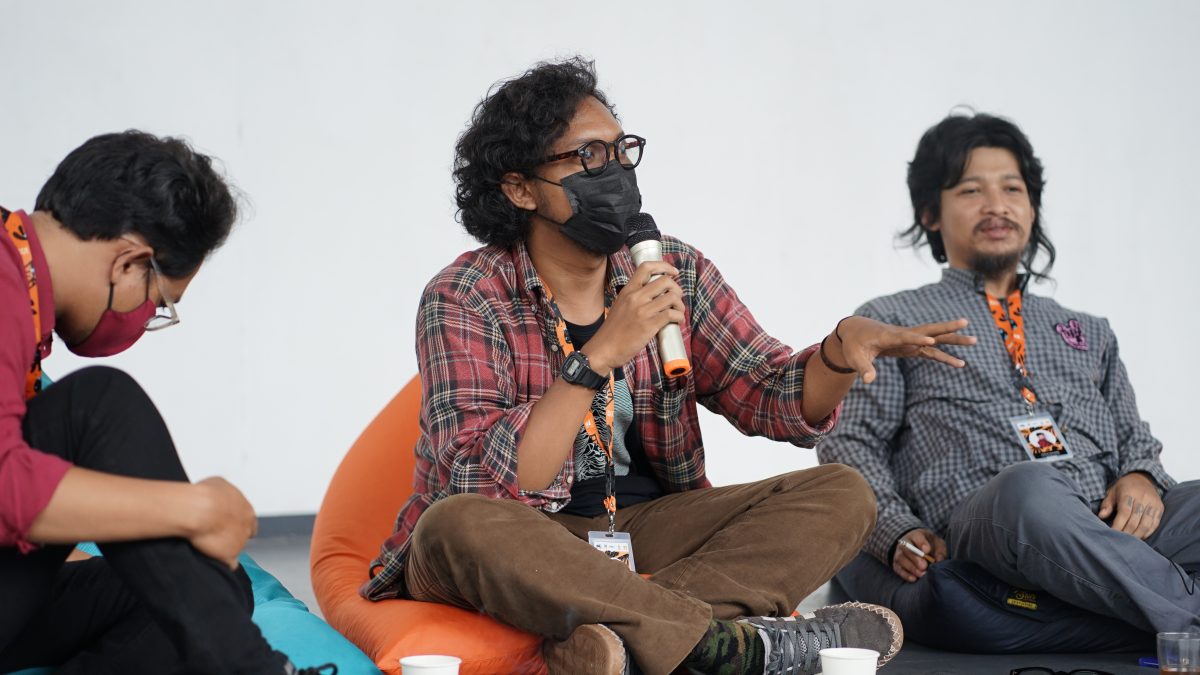
Sitting and leaning on a bean bag, Huhum Hambily (Coordinator of the Publication and Communications Division) told a story. In the past, he was a voluntary exhibition guide at the 2013 Biennale Jogja XII. “(I was) often scolded, so I didn’t feel comfortable. And often skipped,” he said with a laugh.
This is the past story from him that was conveyed at the Open Source activity: Management Talk. This event was held at the Main Stage of the Jogja National Museum (JNM) on Thursday (11/11) afternoon.
As the title suggests, this discussion was attended by seven coordinators of the Biennale Jogja XVI Equator #6 2021 division. One of them is Prima Abadi Sulistyo, Coordinator of the Volunteer and Apprentice Division.
Tebo, as Prima is familiarly called, is reluctant to regard the volunteers as mere workers. “It’s a loss if you only work,” he said.
According to Tebo, volunteers such as exhibition guides should regard the Biennale as a learning space. He directs them to actively interact with the audience. Not just become a passive exhibition guard.
“To understand the artworks, then create dialogues with the audience,” he explained. That, said Tebo, is how they’ll learn.
Regarding dialogues, Tebo said that it also happened between exhibition guides. The closed recruitment scheme spread across various Yogyakarta campuses made the exhibition guide team heterogeneous.
“From there, a cross-disciplinary dialogue emerged,” said Tebo.
Not only there, Tebo explained the continuity of learning for the exhibition guides. “They are directed to write reflections on the exhibition works according to their respective sciences and then they will be recorded,” he explained.
Acong, one of the exhibition guides, agreed with Tebo about the volunteers’ learning aspect. As a student majoring in Theater Arts at the Yogyakarta Art Institute, he is interested in tasting the atmosphere of art such as Biennale Jogja XVI Equator #6 2021.
That expectation was met. “I learned about exhibition management, as well as stage management in theater arts,” he said as he stood up so that he could respond quickly to the audience when needed.
As a guide, Acong is happy because he can meet many people with various characters. Some are actively asking, some are nagging. “Even though (the visitors) are told not to touch (the artworks), (they) still do it,” he complained while laughing behind a mask.
Acong, unlike Huhum in 2013, feels at home as an exhibition guide. The series of lessons he learned made exhibition guides more than just guards.